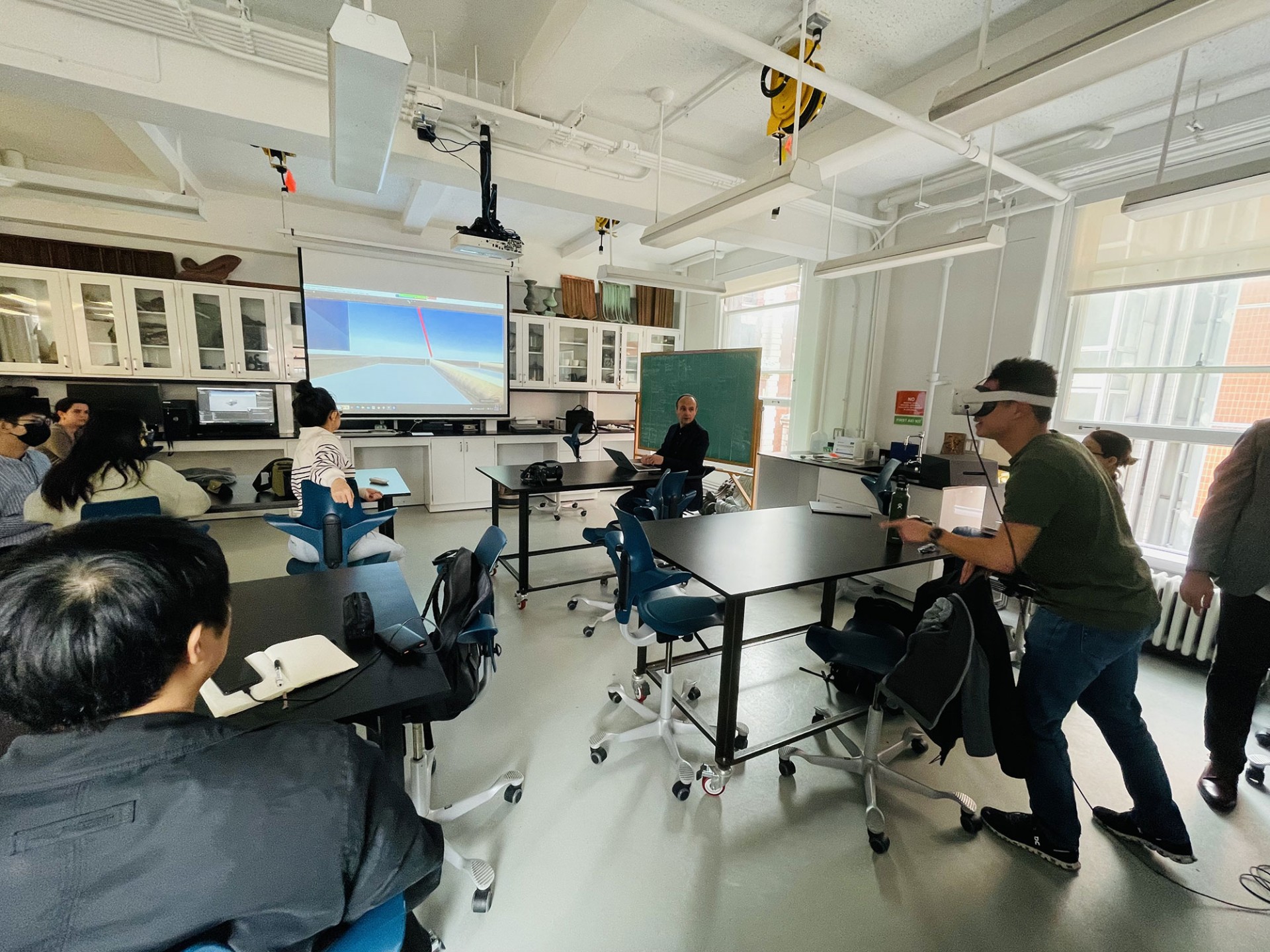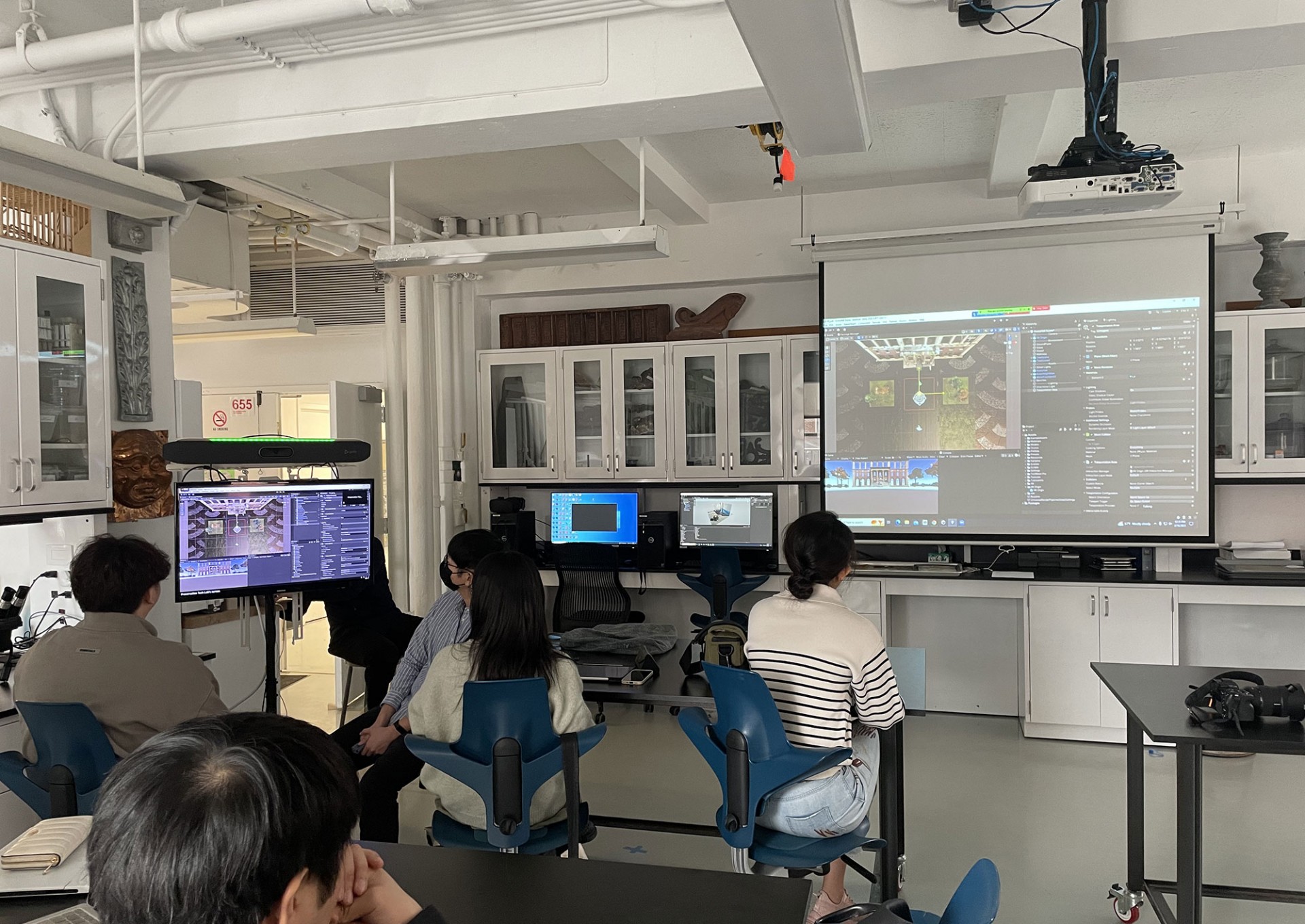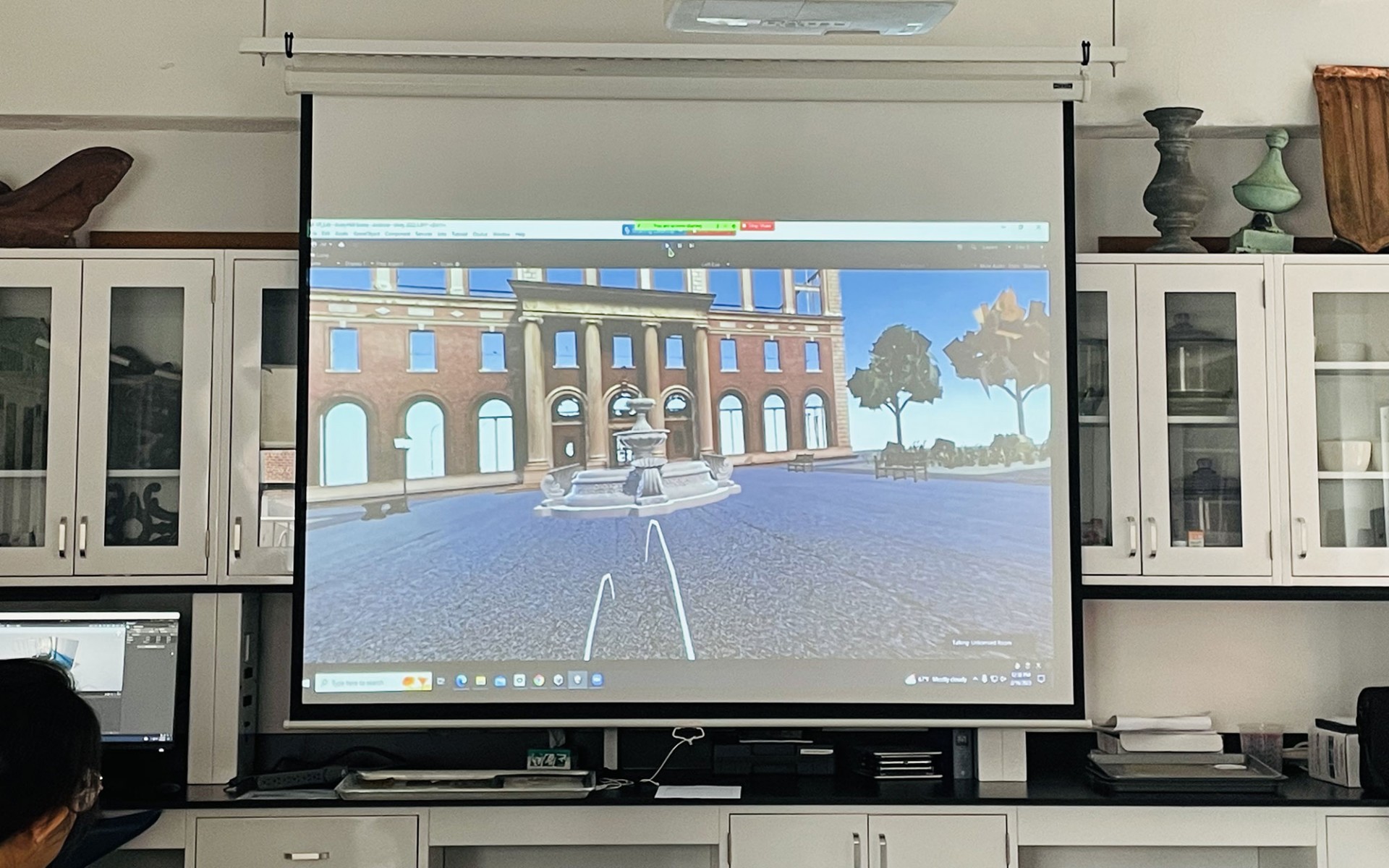Taming Emerging Technology for Architectural Preservation
Jorge Otero-Palios, Director and Professor of Historic Preservation at Columbia University's Graduate School of Architecture, Planning, and Preservation, collaborated with CUIT Emerging Technologies in the Architectural Preservation course to teach his students about the fundamentals of VR content creation using Unity 3D software.
Unity3D is a gaming engine to make VR applications, offering a user-friendly interface that enables content creators and developers to produce interactions, lifelike 3D models and immersive worlds. Emerging Technologist, John Martin, introduced Unity 3D to students in the Preservation Lab including;
- introduction to VR technology and its history
- fundamentals of VR development using Unity 3D software
- essential ideas behind VR development, such as interaction design, scripting, animation, and 3D modeling and the value of user experience (UX) design
Students were given a pre-built environment and gained hands-on experience with adding interactive components, including buttons and audio sources and modifying pre-built surroundings to produce their own VR experiences.
With Emerging Technology's in-kind support with Teaching and Learning grant, students had an opportunity to peek into the world of VR development and gain the knowledge and hands-on learning experience to create their own VR applications of Architectural Preservation. The knowledge and experience gained in the lab course will be valuable for students to apply in high demand in the years to come as mixed reality tools and applications become more widespread across various industries.
Our grant program has offered an opportunity to work with our faculty to explore how teaching and learning in higher education can bring innovation and impact to curriculum and pedagogy with the help of emerging technologies. Our faculty are studying exciting applications of virtual reality (VR), augmented reality (AR), mixed reality (MR), 3D scanning/printing, and drones in fields such as architectural preservation, creative writing, biochemistry, occupational therapy, and nursing education.



